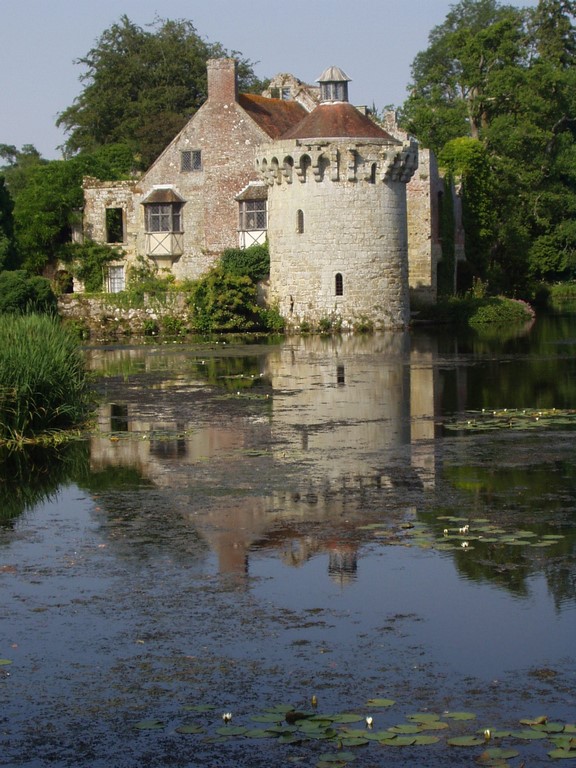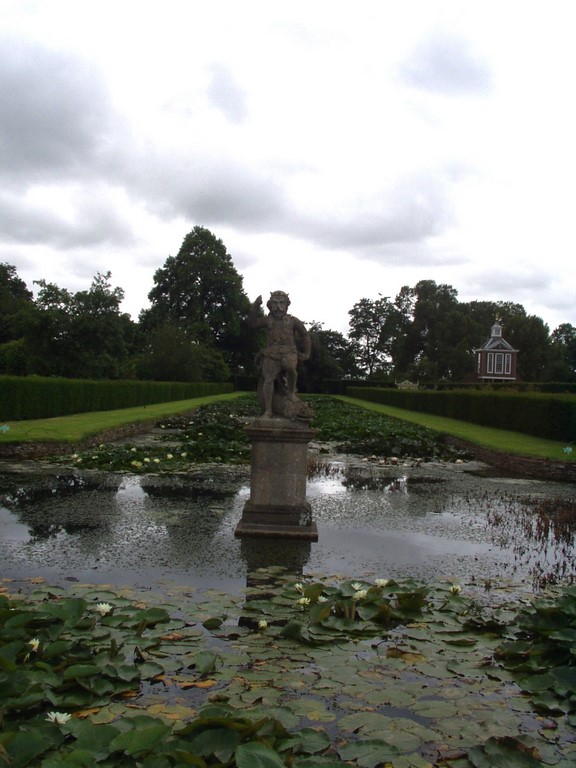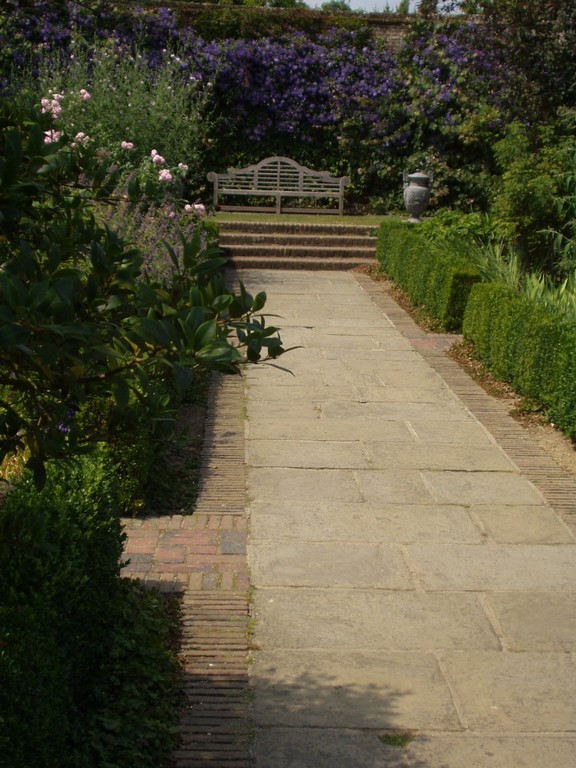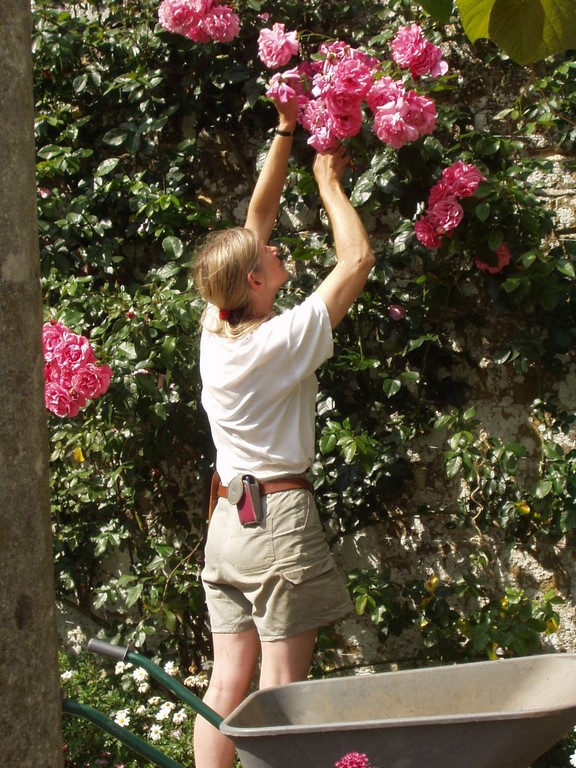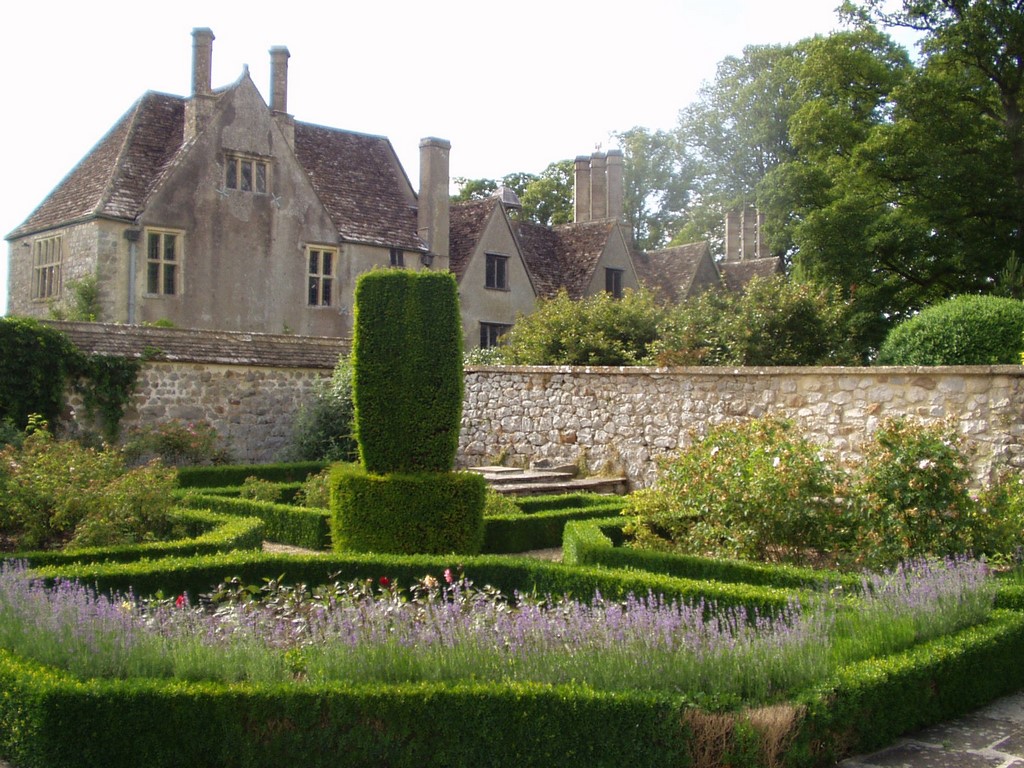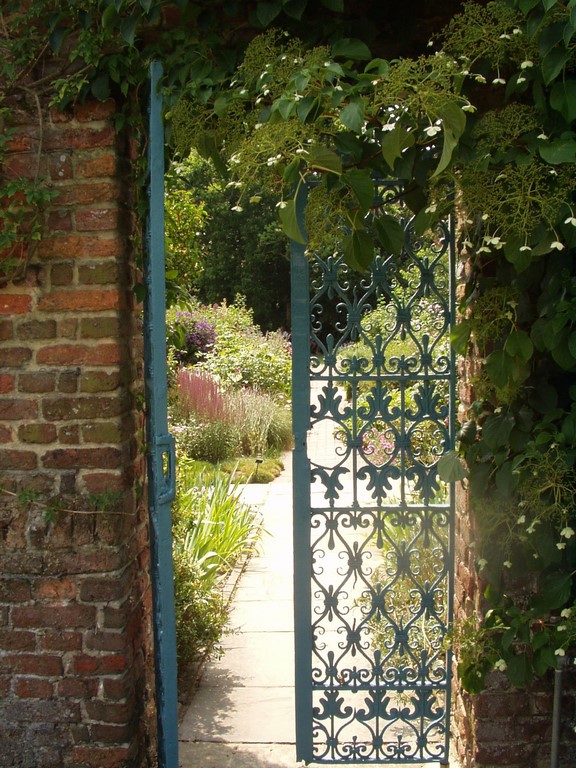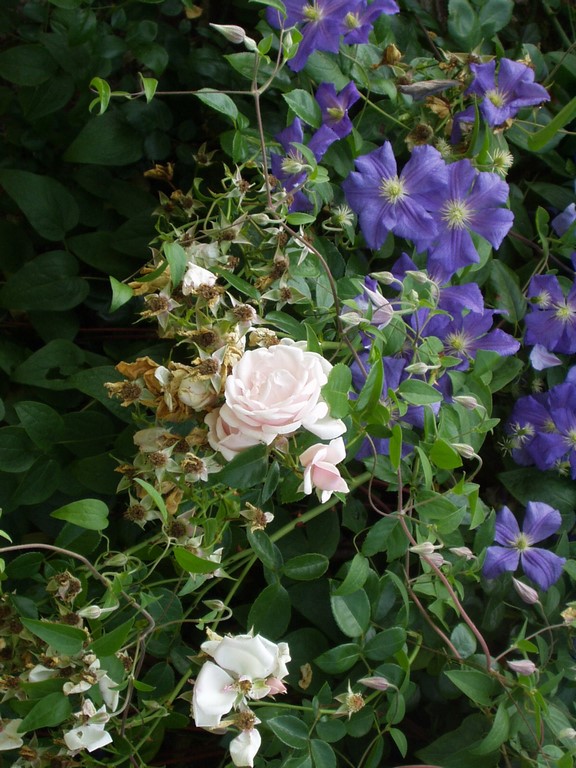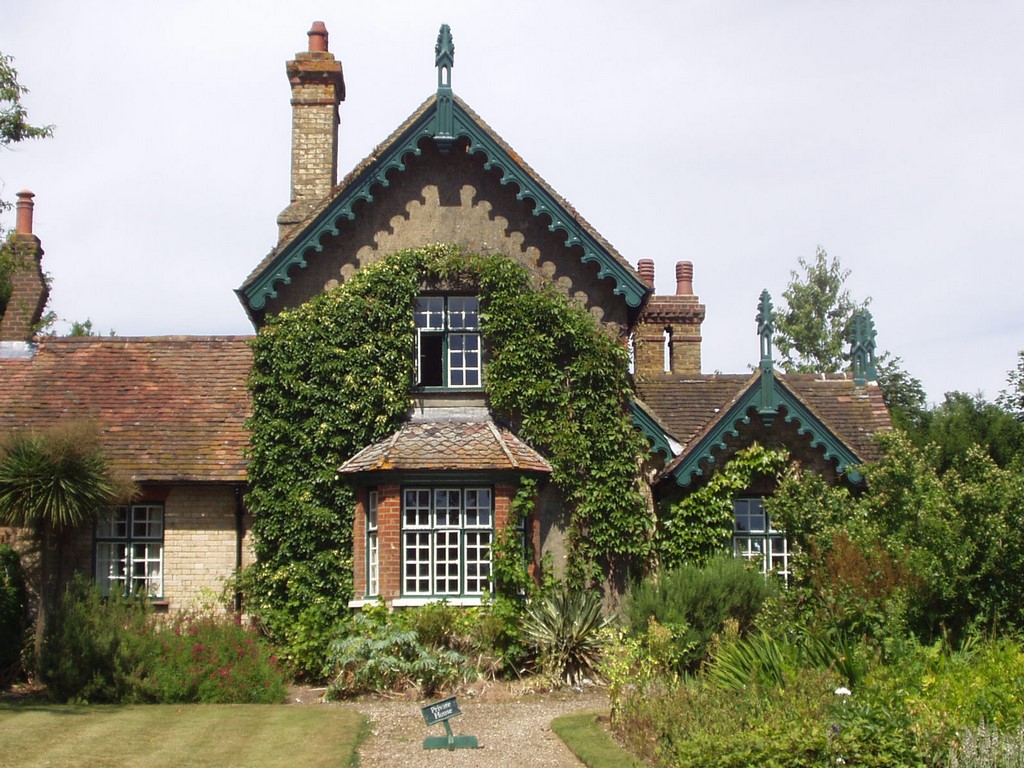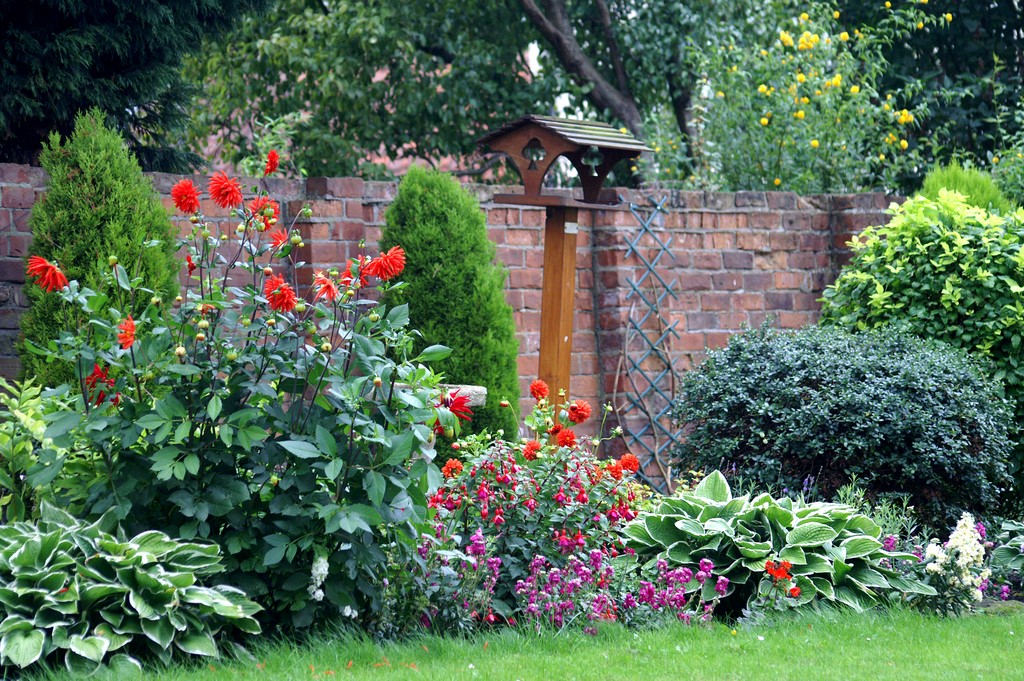English Lessons

As a garden designer, I’ve often heard about wonderful English gardens, historic British designers and specific design styles that have radiated from England through the years.
I’ve studied books, seen wonderful profiles in magazines and searched the web for photographs and descriptions, but in recent years, the modern miracles of frequent-flier miles and house swapping have enabled me to experience these truly marvelous gardens for myself. My family and I, in fact, have visited England ten times since our first trip there in 1999.
Each trip has given me the opportunity to visit amazing and inspiring gardens in different areas of the country – an education in design that I have fully integrated into my garden-design practice with Blue Hill Design in northern California.
For their part, the English people are very welcoming – and especially, it seems, to gardeners: Gardening hosts on television are major celebrities, garden shows draw enormous crowds in a country where everyone fancies him- or herself to have green thumbs, and just about every British home with any outdoor space at all has its own garden.
Even the smallest 20-by-20-foot front gardens are lovingly tended and thoughtfully designed. Each morning while there, I walk through neighborhoods and study spaces blessed through the summer months by mild weather and frequent light showers that sustain trees older than my home country.
A BIT OF HISTORY
It’s obvious that the English treasure, maintain and restore their historic places. And that includes their gardens.
Gardening in England has been a favored pursuit of the rich and landed ever since the reign of Henry VIII in the 1500s. For nearly 500 years, those who’ve owned manor houses and castles have, without hesitation, dedicated large gardening staffs to the maintenance of superlative gardens and landscapes for the enjoyment of the owners and their guests.
Neighboring families developed friendly rivalries over their gardens, striving to see who could achieve the most impressive shows of exotic plants, statuary, waterfeatures and ornamental garden structures. In some cases, “plant explorers” were dispatched to exotic climes throughout the world in search of unusual and beautiful plants to be brought back to England for coddling and propagation in enormous greenhouses.
| Simply walking around residential neighborhoods yields visual treats just about everywhere I’ve been in England: Homes with the most modest of exteriors are often graced by interesting garden spaces and furnishings, and exterior walls are often used as foils for beautiful, climbing displays. |
The names of these British explorers endure to this day through their appearances in the scientific names of plants they described and cataloged, including “banksia” for Joseph Banks, who sailed the South Pacific with Captain Cook; “wilsonii” for Ernest Henry Wilson, said to have recorded 2,000 new species in a four-month exploration of China; “hookeri” for Joseph Hooker, who explored far and wide through Asia; and “douglasiana” for David Douglas, who explored North America and discovered, among others, the California Poppy and the Douglas fir.
Early English gardening was influenced by the formal continental gardening styles of France and Italy, although there was a brief fling with the Dutch watergarden style in the late 16th and early 17th centuries. By the 18th Century, however, the English self-consciously began developing their own unique approaches: The “natural” style of William Kent, Lancelot “Capability” Brown and Humphrey Repton first appeared in this period and lives on today at Stowe, Blenheim Palace and Kew Gardens.
| English gardening first emerged in the Tudor era, and many structures surviving since those times have well-maintained gardens that seem their perfect accompaniment (left). Since that time, fine estates including Blenheim Palace from the 17th Century (middle) and Nymans Garden from the 20th (right) have boasted garden spaces reflecting the tastes of their times. |
By the 19th Century, the Victorians were experimenting with combinations of garden styles borrowed from the Italians, the Chinese and the Japanese, often establishing separate “rooms” to display each within single gardens. As the century closed, the emergence of the Arts & Crafts Movement coincided with a trend toward placing formal, geometric gardens near the house and then gradually merging them with “wild” gardens in the farther reaches of a property.
During this period, Gertrude Jekyll made an immense impression on garden design with her “painterly” approach to color planning in perennial borders. Many famous gardens, including Hidcote and Sissinghurst, survive from this period.
HERITAGE PRESERVATION
In the last years of the 19th Century, the British government formed the National Trust, a non-profit, registered charity whose mission then as now is to “look after places of historic interest or natural beauty permanently for the benefit of the nation.” Today, it protects more than 623,000 acres of land and 700 miles of coastline in Wales, Northern Ireland and England.
I stumbled on this organization almost accidentally while visiting Cornwall. My family and I went to St. Michael’s Mount, a castle on an island that can be reached by land for just a few hours each day when the tide is low. My thrifty husband figured out that for only a bit more than the price of one day’s admission for our family, we could join the trust for a year and gain free access to more than 300 castles, manor houses, gardens, parks and historic sites. We signed up at once!
Each trust property is unique, and I’ve yet to visit one that didn’t impress – and I’ve now been to nearly fifty of them. As a rule, the gardens are spectacularly planned and maintained, some as replications of classic originals, others in modernized interpretations. A typical one encompasses several acres and may include rose gardens, kitchen gardens, perennial borders, rock gardens, secret gardens, mazes, waterfeatures, topiaries and landscape parks.
| Water is a common and significant inclusion in English gardens, basically reflecting the fact that this is, after all, a rain-drenched part of the world. But those uses are seldom predictable and often delightfully surprising as you encounter ponds, moats and ornamented reflecting pools paired with dwellings of all types and descriptions. |
Most are surrounded by further acreage of open park- and woodland featuring purpose-built ponds, streams and waterfalls to extend views from the house. The houses themselves range from the grand to the charming, and some are quite quirky. Better still, almost all National Trust properties are open to visitors, with interpretive signage and docents on hand to answer questions.
For the garden designer, the National Trust properties alone offer incredibly varied lessons in great gardening and the opportunity to be repeatedly amazed and inspired by fantastic ideas from both past and present.
Even if you are in London for only a week, you can be delighted and inspired by the world-famous gardens at Sissinghurst, by Winston Churchill’s country estate at Chartwell, by the secluded, ancient moat garden at Scotney Castle or by the incredible Kew Gardens – all National Trust properties and all within an hour or two of London (in some cases via public transportation).
SPECIFIC LESSONS
With all this traveling, I’ve come to appreciate, draw inspiration from and learn valuable lessons while on the road. Through the years, in fact, I’ve developed a deep and abiding respect for these “foreign” garden traditions – and copied a few principles that I have since applied to my own work.
[ ] Architecture is the perfect garden ornament. The garden of every English manor house I’ve seen is full of architecture, from the home itself to various outbuildings, garden walls and massive evergreen hedges – and in all cases everything works together in forming massed compositions in stone, trees, plants and water.
Gardening vertically on every available wall surface is one way gardens are tied to their anchoring structures, and I marvel at the way using this approach in my own work has given me more space for growing plants. Moreover, I noticed both in England and back home that the microclimate formed by the warming effect of a south-facing wall allows these garden areas to sustain plants of a more tender variety than might otherwise thrive.
The plants the English use to clothe their architecture are as common as Ivy or Creeping Fig, but Honeysuckle and Clematis can make even a pigsty into a tempting garden attraction. There are also such beauties as the climbing Roses on the brick walls at Chartwell or the amazing Magnolia grandiflora espaliered on an old stone wall at Lanhydrock in Cornwall.
Almost all English garden contain waterfeatures carefully designed to contribute to the overall affect: in one case, a simple rectangular reflecting pool outlined in boxwood anchors a quiet, formal space; in another, there’s an exuberant, splashing fountain surrounded by a multi-colored riot of flowers; and carefully arranged streams falling naturalistically across boulders highlights a Japanese maple collection in yet another.
[ ] Subdividing is the key to good spatial design. Famously used by Vita Sackville-West to create her White Garden at Sissinghurst, the garden-room technique is something I now consider in all but the tiniest gardens. Even in smallish spaces, I don’t hesitate to break gardens into areas for different uses, atmospheres and plantings – a division often achieved through careful use of walls, hedges, pergolas, tunnels, arbors or fences.
| Of all the gardens in England, those at Chartwell and Sissinghurst are among the most treasured. Whole articles could (and should) be written on these places and the magical vignettes created through artful mixtures of plants, hardscape and garden ornaments (including the original Luyten’s bench). In visiting Chartwell, I was particularly impressed by the attention staff seemed to pay to every detail. |
As an example, the small suburban home in which my family stayed in London in 2006 had a tiny, odd-shaped garden, but even so, it was divided into three rooms by a delightfully informal hedge and a small pergola. This simple concept created a lawn area for play, a small dining patio with a tiny birdbath and a vegetable-gardening area, each one with a distinct style and flavor.
I’ve also observed wonderful use of doorways and gates between areas to give gardens an air of mystery that invites visitors to explore that which is hidden ahead. These transitions serve another purpose by giving the designer an opportunity to change color schemes and plant palettes gracefully, unexpectedly and creatively from area to area.
[ ] Think big! Gardeners in the English tradition clearly understand the importance of scale in establishing generous outdoor spaces. Main paths are wide and graceful, allowing three or even four people to walk side by side while exploring. Arbors run from 50 to 100 feet long, while pergolas are grand enough for tables that seat a dozen comfortably with plenty of room for service access.
At Kedleston Hall, a two-acre pond (dug by hand in the 1700s under the direction of the famous designer Robert Adams) is the highlight of the landscape garden: Graceful arched bridges and a pictureseque boat house on an island complete the perfect vista from the house.
One of my favorite examples of “thinking big” as it applies to garden ornamentation is at Scotney Castle, where the family that has owned the estate for 250 years decided they needed a more modern living space. Rather than remodel, they simply moved out of the damp, drafty 700-year-old castle and converted it into a garden ornament! Partly ruined, lavishly planted and reflected picturesquely in the surrounding moat, this may be the ultimate romantic garden folly.
The idea of thinking big contrasts sharply with what I see at home, where pathways are a cramped three feet wide, where entry arches seem scaled to dollhouses and garden ornaments are so small that they disappear from view when the plants grow in. These observations of scale have emboldened my designs – so much so that my husband has promised to build me a castle in my garden when he retires.
[ ] Put the right plants in the right places. This is an old gardener’s truism, but placing things properly truly is a key to good garden design. Inspired by the English, I have studied plant associations in the wild and in established gardens, seeing what works and coming to understand these plants’ needs, likes and dislikes.
| I was amazed by several places in which ancient buildings including the 13th Century Scotney Castle (left) and the 16th Century Avebury Manor (right) were complemented by gardens of more contemporary style. In the former case, the castle becomes a garden ornament, while in the latter the Edwardian formality is an effective commentary on the manor’s Tudor style. |
After a decade in the landscape-design business, I rarely specify a plant for my clients’ gardens about which I don’t have fairly extensive personal knowledge. I never want to guess about the effects sun, water, wind and temperature conditions will have in choosing plant materials, and I’m always careful to allow each plant sufficient room to grow to its mature size. Crowding accomplishes nothing more than creating maintenance hassles.
This is as true for plants in the water as it is for plants on the land. Planting Iris pseudacorus (yellow flag) in a small pond is a sure recipe for an overgrown mess that obscures all but a glimpse of water. (I say this from personal experience after a friend shared a few “small” specimens with me!) Iris versicolor (blue flag) is smaller and more manageable. Likewise, when you select water lilies, you must consider both size and hardiness if you want to create a successful waterfeature.
[ ] Prune with clarity of purpose. Hedges and green walls are key components of English gardens, serving as architecture, wind breaks and backdrops for flowering plants. If you plant a formal hedge, you must determine what its final height, width and shape are to be, then prune to that standard regularly and consistently from the very beginning. Otherwise, you’re effectively torturing a plant that will never look as it should.
Another key, of course, is finding the appropriate variety/cultivar so that its natural form is not in constant conflict with your ideas of the desired size and shape. No matter what you plant on a wall – Rose, Honeysuckle, Ivy or Magnolia – it must be pruned and tied in so that it becomes a gracious presence rather than a jumble of unruly branches.
The English also maintain these important plants in ways that keep them looking great year after year. Even informal and natural plantings need some pruning or deadheading to look their best, and I train maintenance crews to recognize and respect the needs of different plants. Ultimately, clients also must understand the reality that once a week “mow and blow” maintenance program will never give them results on the level they desire.
In that context, it can’t hurt to point out that Claude Monet, famous for his paintings of water lilies, employed a gardener who was responsible for cleaning up and pruning his lily pond daily in order to create perfect pictures.
[ ] Water, water, water. Time and again in England, I saw plants that I was unable to identify despite the fact they looked familiar. Suddenly, and with a jolt in some cases, I realized that what I was seeing was just plain old Barberry, Laurel or Fuchsia – but they were so huge and abundantly healthy as to be unrecognizable.
| There is so much to observe and learn in traveling to England and in seeing its gardens. At Sissinghurst, for example, I couldn’t help noticing the artful use of a gate in a massive brick wall to set up access to a garden room (left) or the delightful mixing of roses and clematis on another wall there (middle left). But even in humbler settings, I found inspiration in the use of climbing plants (middle right) as well as the placement of a common birdhouse (right). |
This is attributable in part to the English climate: In the best gardening areas, it rains upwards of 50 inches a year, and it’s a year-round thing rather than the seasonal downpours I witness in northern California through five or six months of an otherwise dry year. It really is a consistent inch per week – or the equivalent of running a one-gallon-per-minute drip emitter for an hour a week to wet an 18-inch circular area. (Not too many of my clients are doing this, believe me.)
Additionally, even in English summer the high temperatures are only in the 70s,
usually with partly cloudy skies, so much less water is lost to evapotranspiration than it is where I live in California. Lesson learned: I have started watering much more liberally (except in native-garden areas) and use driplines to distribute water evenly throughout my gardens. The upshot is healthier plants that bloom in much greater profusion.
[ ] Use nature’s best fertilizer. One final English garden “secret” I’ve adopted is the regular use of compost and/or manure. This was, I found, the real secret behind the phenomenal growth I saw in so many places, and it is, of course, a program easily applied back home.
I obtain my compost – weed-free and well “cooked” – at a local garden center or, as need requires, in bulk from my county’s yard-waste recycling facilities. I’ve also obtained manure free of charge in rural areas, and I’m now an advocate of aging it for a couple of years to make my own compost, which I apply liberally at least once a year to suppress weeds and provide nature’s own time-released fertilizer for my plants.
LESSONS APPLIED
As time has passed and I’ve internalized more and more of what I’ve observed of England’s gardens, I’ve come to see a distinctly “modern” set of attitudes and approaches that reach back in these cases some 500 years.
|
For Your Information I’ve found two wonderful websites that have helped me in planning trips to England that have been both fun and inspiring: * For details on English garden history and private gardens open to the public, visit www.gardenvisit.com. * For information about the National Trust and its properties, see www.nationaltrust.org.uk. — G.F. |
There’s a tremendous amount of common sense involved, as well as recognition through history that structuring nature the way we prefer to see it takes intelligent selecting in the first place, followed up by appropriate and sometimes painstaking maintenance.
I may have been able to pick a lot of this up from books or magazines, but there’s nothing like seeing these great English gardens firsthand to make the kind of impressions that really stick.
I’m at the point where I can’t wait for my next trip to England: Each time I return newly inspired, filled with ideas and fresh perspectives that I know will help me transform my clients’ yards into even more wonderful spaces for both relaxation and recreation.
Gail Fanning is principal at Blue Hill Design in northern California. After a successful career as a physical therapist, she went back to school at the age of 50 to earn her certification in garden design. She specializes in working with “do-it-yourself” clients who need guidance through planning, construction and planting of their gardens. She can be reached at bluehilldesign9@aol.com.










